The National Gallery in London: Where to Start?
Having lived in London for the past three years as an art lover, I have had more than my fair share of questions about where to “start” at the...
Sophie Pell 3 February 2025
If you happen to spend your vacation in sunny Israel and are a fan of modern art, Tel Aviv Museum of Art is a gem you can’t miss. The main exhibition this summer is Great Yellow Sun, dedicated to the life and work of Alexander Calder.
The Great Yellow Sun exhibition presents the full diversity of Alexander Calder‘s artworks – from his famous mobiles, through wire pieces, sculptures, drawings, and gouache paintings. Additionally, the exhibition screens the Calder, sculptuer de l’air film directed by Francois Levy-Kuentz. Although the exhibit focuses mainly on Calder’s paper works (drawings and gouache paintings), thanks to a concise presentation of his artistic diversity, Great Yellow Sun is a perfect introduction to over five decades of the artist’s career.
The title of the exhibition comes from a 1973 painting and reflects on three elements of the artists oeuvre: scale, color, and form.
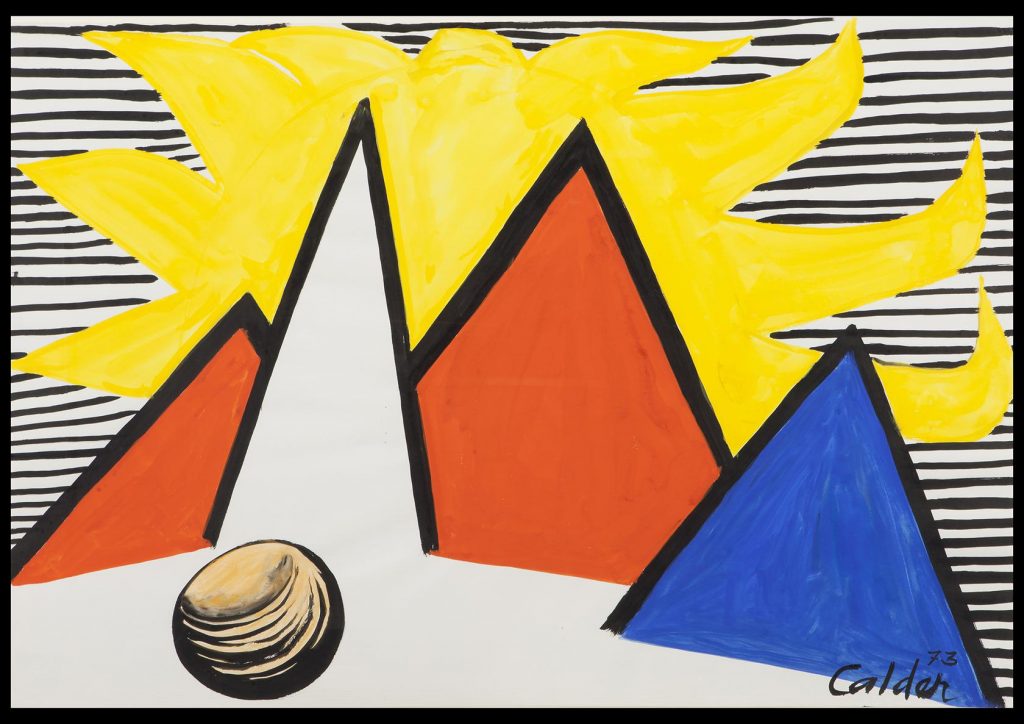
If you would have to name one piece characteristic of Calder’s artistic work, it would definitely be one of his mobile sculptures. Although Great Yellow Sun focuses mainly on Calder’s paper works, there are just enough occasions to become completely mesmerized with the poetry of his mobile sculptures. Whenever I look at them I feel like a child again, lifting my head up to look at the theatre of shapes and spheres moving on the walls.
Calder’s famous mobiles are kinetic sculptures in which elements move by motor or by the gust of air. Make sure to take a moment to admire the show. A Calder sculpture in motion examines the relationships between shapes and colors, or like the artist best describes it:
“My whole theory about art is the disparity that exists between form, masses and movement”
Alexander Calder, in: Katharine Kuh, The Artist’s Voice: Talks with Seventeen Artists, 1962.
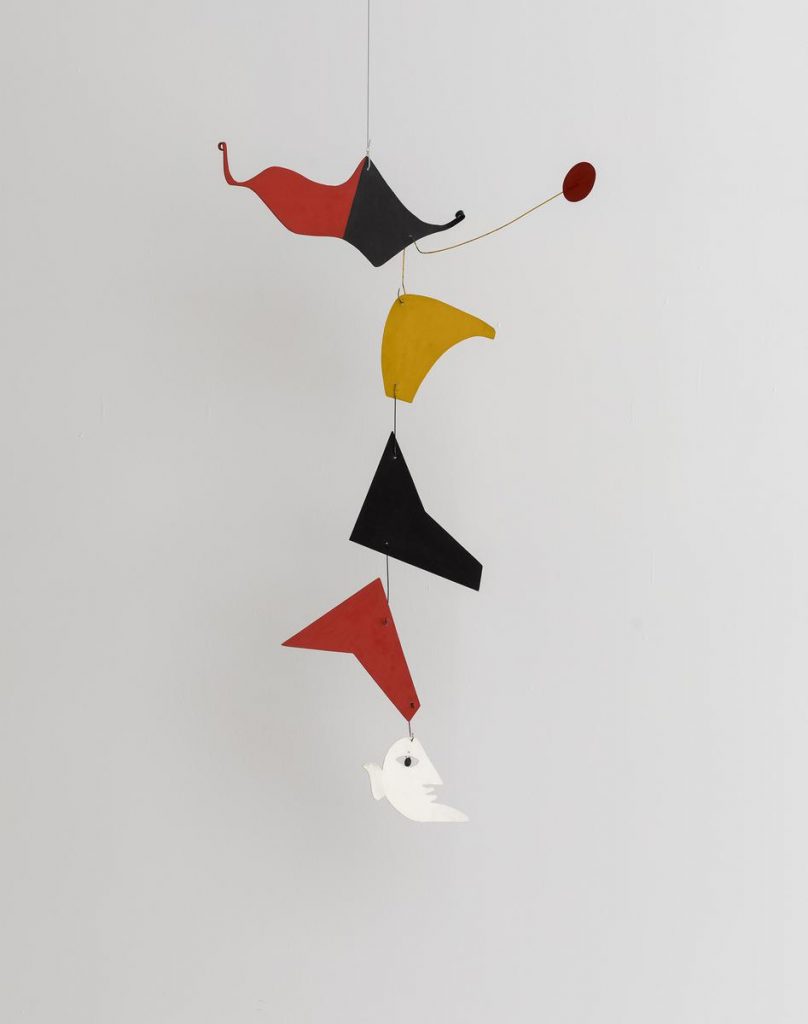
The kinetic star of the show is (luckily for us) well-exposed Poisson avec tete humaine, a 1976 mobile referencing playful circus Harlequins. Sculptures like this are made from flat metal sheets connected by wire. Both the shapes and the colors become part of the composition, later adjoined together with the movement and the shadow theatre. Calder’s mobiles have no correct position or direction of movement. Subsequently, that the same mobile sculpture might be presented differently when shown in a different space.
Great Yellow Sun also introduces us to the so-called stabiles, or simply: static sculptures. Similarly, these are made from thin sheets of metal and are of rather large scales, often placed in many cities around the world. Sometimes the stabiles and mobiles come together – such as in Disque perce mais haut (loan from The Israel Museum, exhibited in The Great Yellow Sun) where the pyramid-shaped base stands firmly, supporting a hovering mobile.
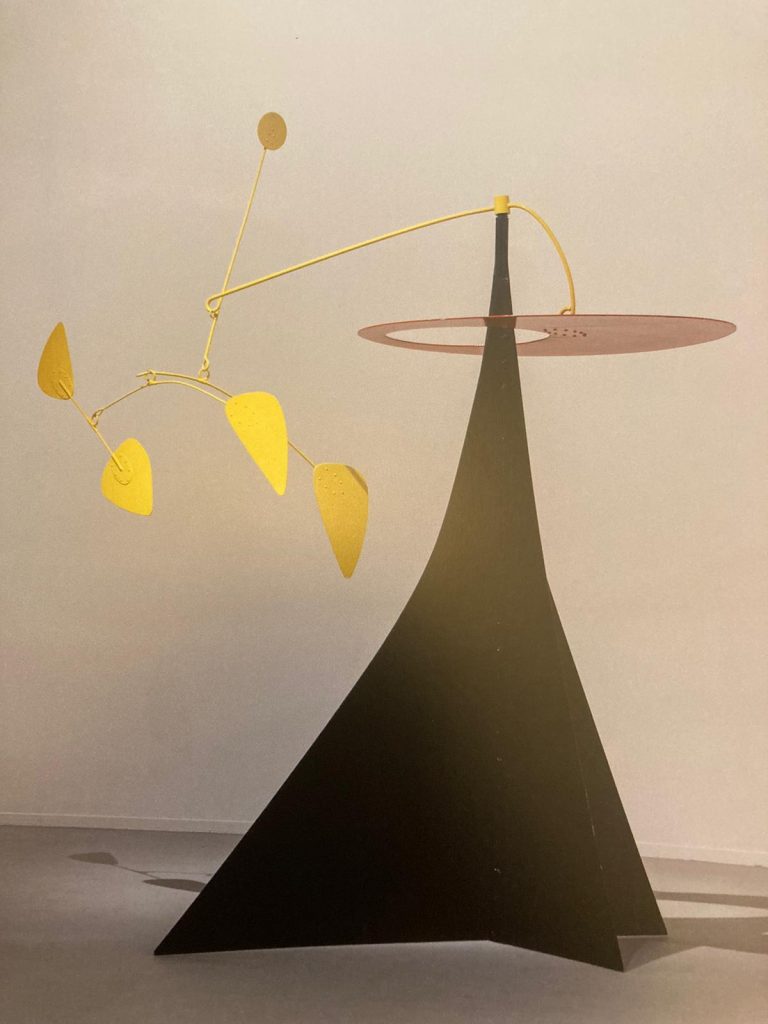
Alexander Calder was committed to a daily painting routine since he began his artistic career in the 1920s. The exhibit surprised me with realistic sketches of animals such as elephants, polar bears, and camels. The drawings are from Calder’s first publication, an Animal Sketching drawing manual. Perhaps the time spent looking at majestic, exotic creatures sparked Calder’s fascination for the circus?
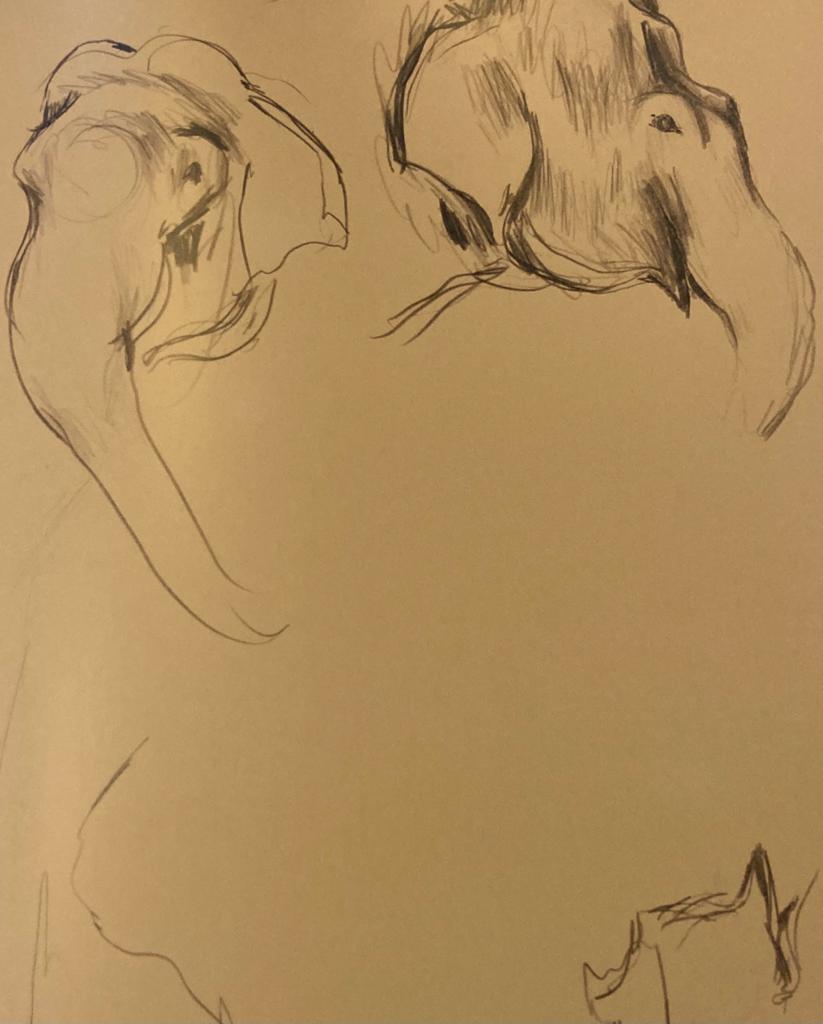
Calder’s world of colors and shapes truly unfolds in his favourite paperwork form: gouaches. Resonant to abstract works of Paul Klee or Joan Miro, the paintings are expressive, intuitive, and full of immediacy
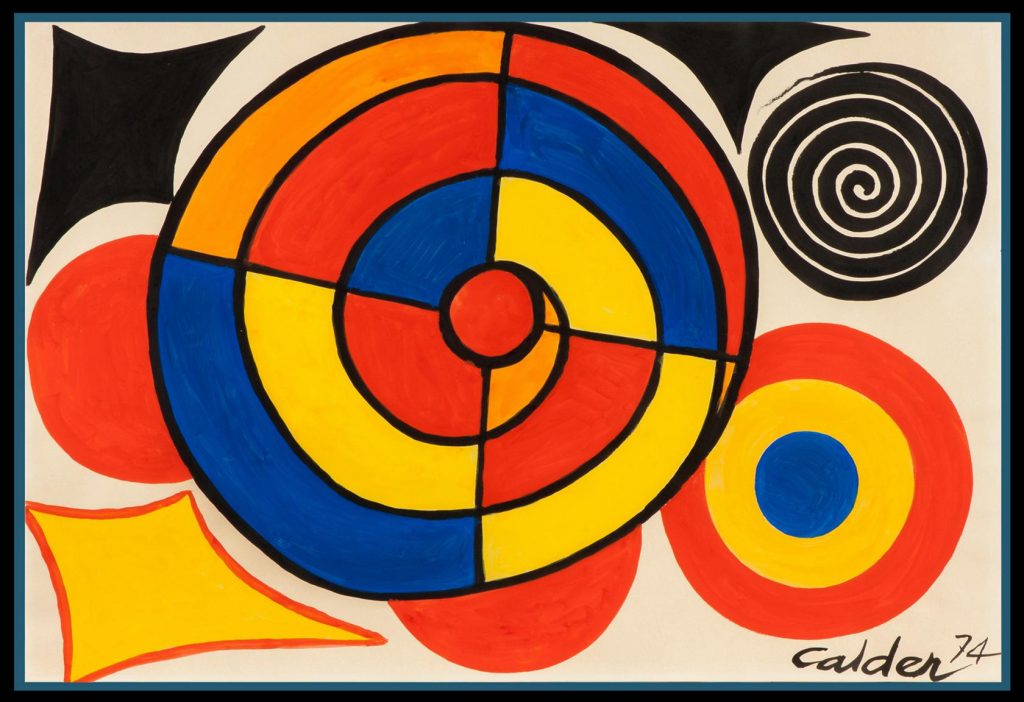
The Great Yellow Sun exhibition offers a unique opportunity to focus on Calder’s gouache works alongside his sculptural forms. A keen eye will quickly notice the similarities between these two – Calder’s world is after all a world of poetic form movements.
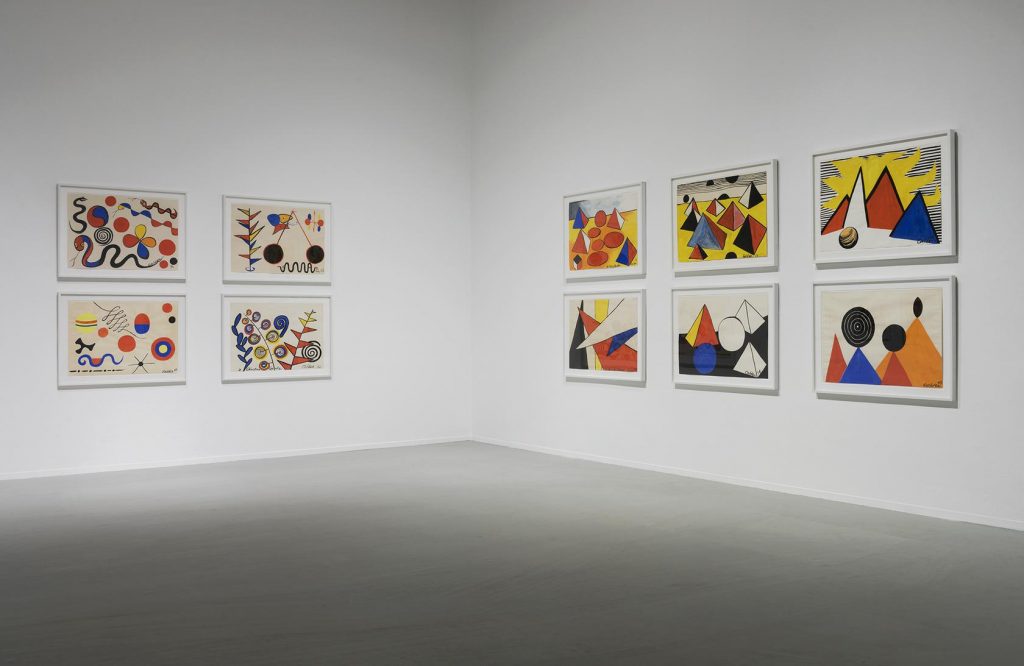
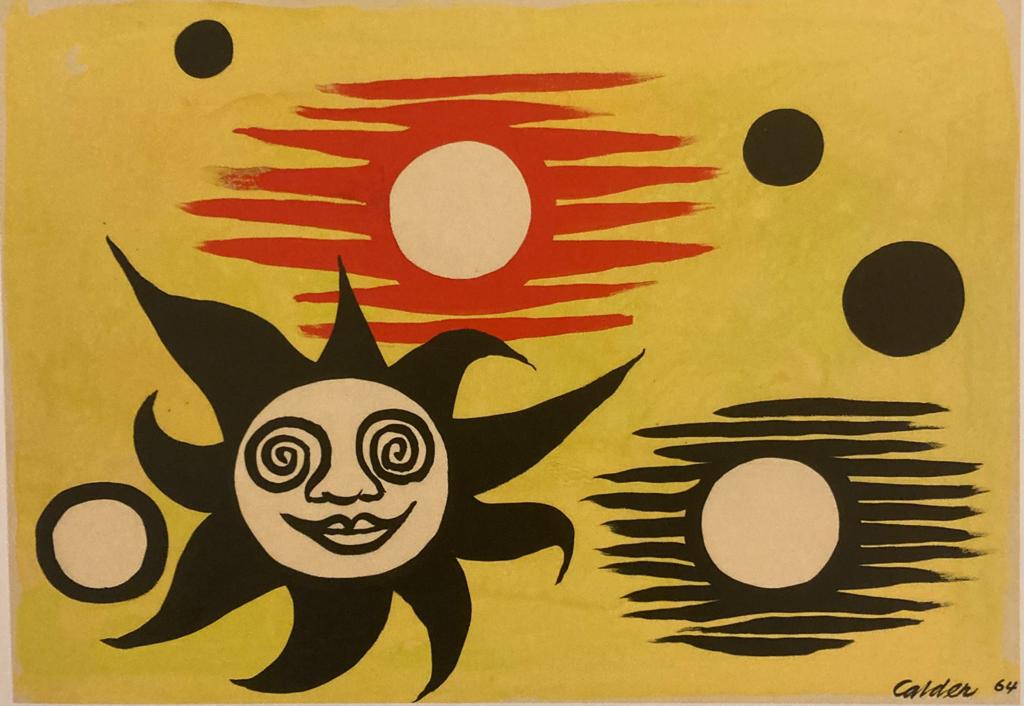
Another lesser known part of Calder’s world are his wire sculptures, which result from the artist’s experiments with line work. Great Yellow Sun presents them as an occasion to mention Calder’s famous generosity, showing some works that he dedicated to his friends. The dedication was often an integral part of his work. One example is To My Valentine, a 1925 wire sculpture dedicated to the artist’s mother.
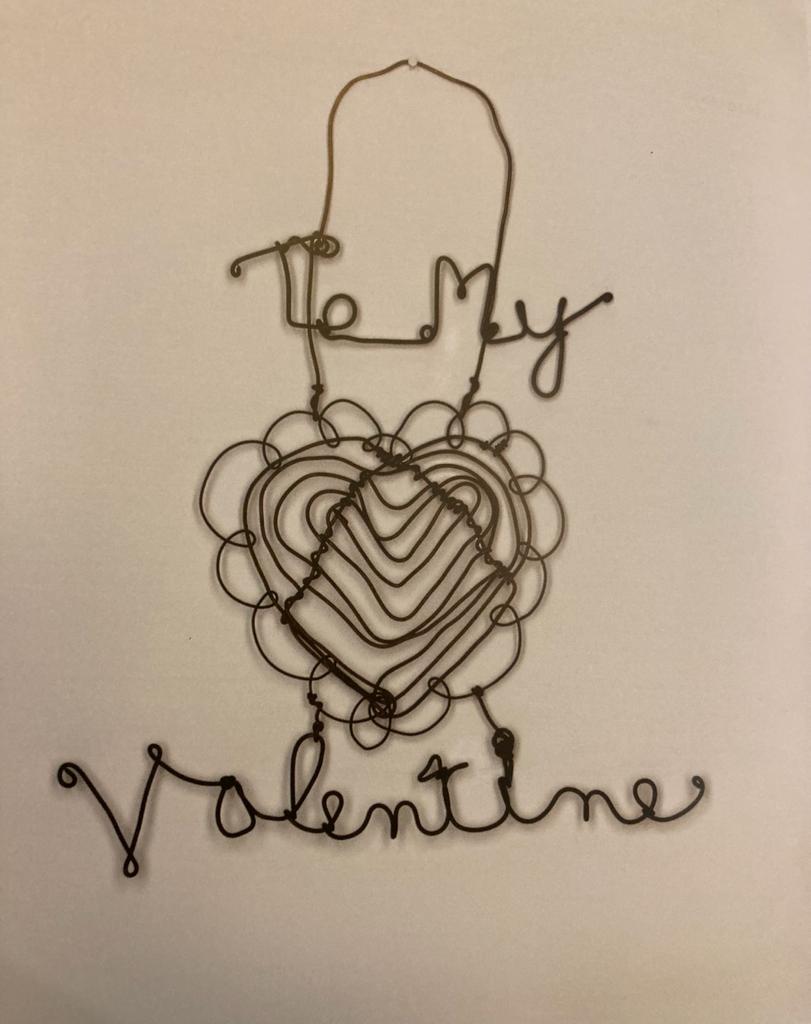
If you’re already at the museum, don’t miss the special display dedicated to Amedeo Modigliani. Built around two portraits of Modigliani’s friends and artistic patrons, Hanka and Leopold Zborowski, Amedeo Modigliani, Among Friends gives us a more intimate view into the artist’s and his contemporaries’ lives.
Visiting master: Amedeo Modigliani, Among Friends is a small display that fits perfectly between the rooms of the museums modern art collection. The display was inspired and built directly around the two loaned artworks (below), with complementing works from the museum’s own collection.
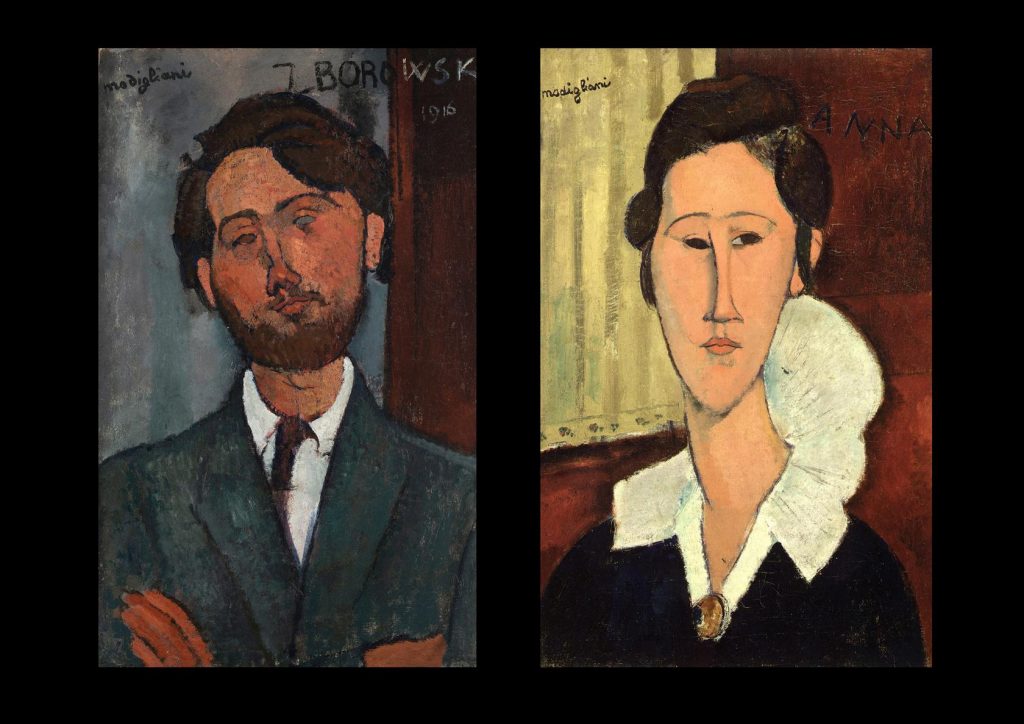
These two portraits by Modigliani are presented alongside works of other artists – most of them Jewish and connected to the Paris School. Pay special note to sculptures by Chana Orloff , which played a key role in the museum’s founding. Chana, one of Modigliani’s titular friends, is our guide into the world of 20th century Paris – selected fragments from her memoirs accompany works in the room.
Calder: Great Yellow Sun and Visiting Master. Amedeo Modigliani: Among Friends can be viewed at the Tel Aviv Museum of Art in Tel Aviv, Israel. Check out their website for visiting information and details about the exhibitions.
Visiting Master. Amedeo Modigliani: Among Friends
DailyArt Magazine needs your support. Every contribution, however big or small, is very valuable for our future. Thanks to it, we will be able to sustain and grow the Magazine. Thank you for your help!